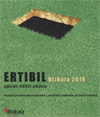
Redemption: The Myth of Pet Overpopulation and the No Kill Revolution in America
1 journaler for this copy...
I received this several days ago from the No-Kill Advocacy Center, as part of a promotion.
My review of another copy:
The primary message of this book is that animal shelters and humane organizations in the U.S. have lost their way and become killers of animals more than protectors. The author indicts the leaders of various animal protection societies more than the citizens of this country, because these societies made bad decisions based more on the need to protect profits - of veterinarians and breeders in particular - and to maintain the status quo - than on the need to protect animals.
I applaud Winograd for detailing the derailing of the animal protection movement. At the same time I quibble with a few aspects of his indictment.
Early in the book he notes that the head of the SPCA in San Mateo, CA went public with the killing of animals. She chose to show the killing on television. To many, including the People for the Ethical Treatment of Animals (PETA) this was a courageous act. I happen to agree with this position in at least one respect: I believe that whenever our society condones the killing of people or other animals such killing should be in our face. We should know about it, no mistake. When such acts are hidden from the public people can forget it happens and convince themselves they have nothing to do with it. A friend of mine, for example, tells herself that the meat she eats comes from cows who died of old age. Such fabrications may make people feel better but they certainly do not advance any animal cause.
So I believe when animal shelters kill they should do so openly so that we can see our failure. Winograd's objection to this approach is that it appeared to condone the killing, to suggest that it is inevitable. I honestly do not believe that was the intent of the shelter leaders who performed these executions live. If so, what would be the point of making it public? The only point is to achieve some sort of behavioral change. The mistake the shelter leader made here, which Winograd points out is typical of shelters nationwide - is to assume that the public, and only the public, is to blame. The shelter positions itself as blameless, as carrying out, in essence, the will of the people.
Winograd is saying that the shelters have been blaming the citizens for what they consider to be the overpopulation of companion animals and what they consider the necessary killing of many healthy animals while in fact the shelters themselves deserve the blame. My personal position is that the killing is a shared responsibility. However, the examples of a few committed shelters make it clear that shelters can end the killing without needing to rely on some vague time in the future when "the public" becomes "more responsible". Shelters can end it right now.
The further I got into the book the more I came around to Winograd's position. And the more I came to the sickening conclusion that the organizations that are supposed to be protecting our animals are needlessly killing them instead, at the same time attacking those shelters that have indeed achieved a real no-kill status. It is this resistance that forms the core of the message, because the means are available to make this a no-kill country. Now. Virtually overnight.
Winograd's method, which he calls the No-Kill Equation, includes several actions that any shelter can take:
* Neuter all animals that enter the shelter except those that are incurably and painfully ill and must be euthanized for that reason.
* Support and even operate Trap-Neuter-Release programs for feral cats in the community.
* Use volunteers to socialize and foster animals to make them more readily adoptable and to create additional space in the shelter.
* Provide medical care and isolation as needed for sick animals
* Use the media to bring the animals and their needs to the public
* Expand shelter hours and offer off-site adoptions to meet the needs of the public
* Allow animal protection groups to take healthy animals for adoption at their shelters or off-site adoptions
Winograd also accepts the killing of dogs that are considered irretrievably vicious, because to date there are not enough sanctuaries for these dogs. I have difficulty with this position because these are innocent dogs who deserve to live. They may not be suitable companion animals but there are not a lot of them (by his own calculations) and I suspect there are sanctuaries who can accommodate them. Best Friends Animal Sanctuary always finds a way to keep animals alive, including those with behavior problems. This is a type of quibble, though, in the face of the astonishing success Winograd outlines here.
In the cases Winograd outlines in this book, the media attention on true no-kill shelters quickly brought in the money needed to undertake all of these actions, and eventually the aggressive actions reduced the number of animals brought into the shelters. It's a win-win all around. But it only works, Winograd reminds us again and again, if the shelter is absolutely commmitted. His three-step program:
* Stop the killing
* Stop the killing
* Stop the killing
Unless shelter directors and staff are fully committed to stopping the killing it will go on. It is unfortunate that at this time it takes special directors to achieve no-kill status, but even this situation can and likely will change. Winograd sees a change in the public perception of animal shelters based on greater visibility, and accordingly the public will no longer accept the standard operating procedures that are so common today.
The effect this book had on me was surprising: I have long felt responsible for these animals and have felt a horrible hopelessness. Now I know this:
* It is within the power of animal shelters to STOP the killing.
* There actually is no pet overpopulation problem.
I don't feel as hopeless. I know what tools can be used and I know I can demand that these tools be used.
Every shelter should have this book. Every governing board that regulates these shelters should read this book. And every humane society leadership should read this book. And honestly pay attention to it.
My review of another copy:
The primary message of this book is that animal shelters and humane organizations in the U.S. have lost their way and become killers of animals more than protectors. The author indicts the leaders of various animal protection societies more than the citizens of this country, because these societies made bad decisions based more on the need to protect profits - of veterinarians and breeders in particular - and to maintain the status quo - than on the need to protect animals.
I applaud Winograd for detailing the derailing of the animal protection movement. At the same time I quibble with a few aspects of his indictment.
Early in the book he notes that the head of the SPCA in San Mateo, CA went public with the killing of animals. She chose to show the killing on television. To many, including the People for the Ethical Treatment of Animals (PETA) this was a courageous act. I happen to agree with this position in at least one respect: I believe that whenever our society condones the killing of people or other animals such killing should be in our face. We should know about it, no mistake. When such acts are hidden from the public people can forget it happens and convince themselves they have nothing to do with it. A friend of mine, for example, tells herself that the meat she eats comes from cows who died of old age. Such fabrications may make people feel better but they certainly do not advance any animal cause.
So I believe when animal shelters kill they should do so openly so that we can see our failure. Winograd's objection to this approach is that it appeared to condone the killing, to suggest that it is inevitable. I honestly do not believe that was the intent of the shelter leaders who performed these executions live. If so, what would be the point of making it public? The only point is to achieve some sort of behavioral change. The mistake the shelter leader made here, which Winograd points out is typical of shelters nationwide - is to assume that the public, and only the public, is to blame. The shelter positions itself as blameless, as carrying out, in essence, the will of the people.
Winograd is saying that the shelters have been blaming the citizens for what they consider to be the overpopulation of companion animals and what they consider the necessary killing of many healthy animals while in fact the shelters themselves deserve the blame. My personal position is that the killing is a shared responsibility. However, the examples of a few committed shelters make it clear that shelters can end the killing without needing to rely on some vague time in the future when "the public" becomes "more responsible". Shelters can end it right now.
The further I got into the book the more I came around to Winograd's position. And the more I came to the sickening conclusion that the organizations that are supposed to be protecting our animals are needlessly killing them instead, at the same time attacking those shelters that have indeed achieved a real no-kill status. It is this resistance that forms the core of the message, because the means are available to make this a no-kill country. Now. Virtually overnight.
Winograd's method, which he calls the No-Kill Equation, includes several actions that any shelter can take:
* Neuter all animals that enter the shelter except those that are incurably and painfully ill and must be euthanized for that reason.
* Support and even operate Trap-Neuter-Release programs for feral cats in the community.
* Use volunteers to socialize and foster animals to make them more readily adoptable and to create additional space in the shelter.
* Provide medical care and isolation as needed for sick animals
* Use the media to bring the animals and their needs to the public
* Expand shelter hours and offer off-site adoptions to meet the needs of the public
* Allow animal protection groups to take healthy animals for adoption at their shelters or off-site adoptions
Winograd also accepts the killing of dogs that are considered irretrievably vicious, because to date there are not enough sanctuaries for these dogs. I have difficulty with this position because these are innocent dogs who deserve to live. They may not be suitable companion animals but there are not a lot of them (by his own calculations) and I suspect there are sanctuaries who can accommodate them. Best Friends Animal Sanctuary always finds a way to keep animals alive, including those with behavior problems. This is a type of quibble, though, in the face of the astonishing success Winograd outlines here.
In the cases Winograd outlines in this book, the media attention on true no-kill shelters quickly brought in the money needed to undertake all of these actions, and eventually the aggressive actions reduced the number of animals brought into the shelters. It's a win-win all around. But it only works, Winograd reminds us again and again, if the shelter is absolutely commmitted. His three-step program:
* Stop the killing
* Stop the killing
* Stop the killing
Unless shelter directors and staff are fully committed to stopping the killing it will go on. It is unfortunate that at this time it takes special directors to achieve no-kill status, but even this situation can and likely will change. Winograd sees a change in the public perception of animal shelters based on greater visibility, and accordingly the public will no longer accept the standard operating procedures that are so common today.
The effect this book had on me was surprising: I have long felt responsible for these animals and have felt a horrible hopelessness. Now I know this:
* It is within the power of animal shelters to STOP the killing.
* There actually is no pet overpopulation problem.
I don't feel as hopeless. I know what tools can be used and I know I can demand that these tools be used.
Every shelter should have this book. Every governing board that regulates these shelters should read this book. And every humane society leadership should read this book. And honestly pay attention to it.
Journal Entry 2 by jlautner at Paseo Verde Library in Henderson, Nevada USA on Saturday, March 9, 2019
Released 5 yrs ago (3/8/2019 UTC) at Paseo Verde Library in Henderson, Nevada USA
WILD RELEASE NOTES:
Donated to Friends of the Library.
 This Book is Currently in the Wild!
This Book is Currently in the Wild!













